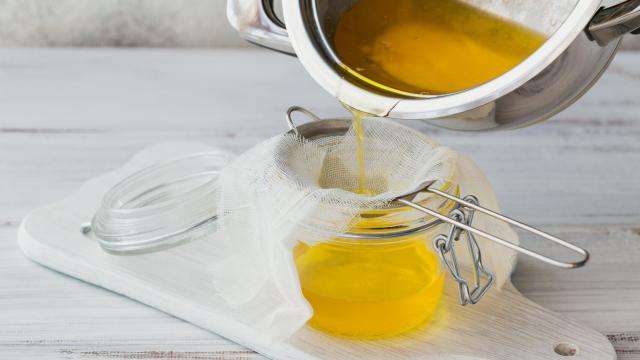Butter is an ideal dipping sauce for these sweltering summer months, when the artichokes are ready to be steamed and the crab is ready to be boiled. If you’ve eaten much of either of those, you’ve probably noticed they come with a little tub of drawn butter for dipping. But how does one go about drawing butter, exactly, and is it any different from making ghee?
Both butters are clarified and made in a very similar way, with one tiny distinction. Drawn butter is made by simmering butter over lowish heat; the water foams and boils off, then the milk proteins start to clump together in white blobs and sink to the bottom of the pan. Strain those out and you’re left with pure butterfat (or 99% butterfat; yields may vary).
Ghee takes a few minutes longer to make. Primarily used in Indian cooking (though it has been co-opted by the Whole 30ers and Keto folks), the process for making ghee is almost identical to the one used to make drawn butter, but instead of straining out the white milk solids the moment they sink to the bottom of the pan, you let them cook in the hot butter, just as if you were making browned butter. You then strain out the browned bits, and you have ghee. (You can also make ghee in the microwave, if you are so inclined.)
This extra bit of cooking gives ghee a nutty flavour absent in “regular” drawn butter. Thanks to the lack of water and proteins, both clarified butters remain stable at room temperature for months, have a higher smoke points than un-clarified butter, and can be used in place of butter when cooking for people who have hard time digesting milk proteins and sugars.
Ghee is most commonly used in Indian cooking, while you’ll see clarified butter called for in French recipes (though, to be fair, ghee is a form of clarified butter). You can use them interchangeably — dip crab legs in ghee! — but be aware that ghee will bring a pleasant nuttiness to whatever you bake/cook it into. (This is not a bad thing.)

Leave a Reply
You must be logged in to post a comment.